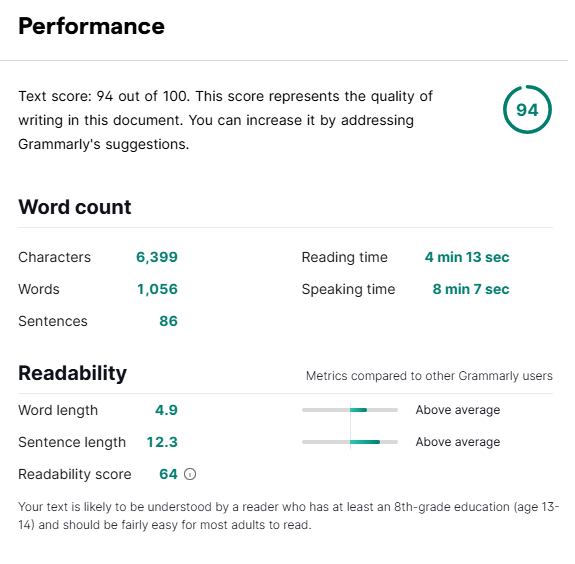The Human-First Approach to AI in Content Marketing: Balancing Technology and Authenticity

You’re on a deadline. The brief is vague. So you open an AI tool to knock out a first draft.
Ten minutes later, you’ve got 800 words of technically correct, grammatically sound content — and zero interest in reading it.
Sound familiar?
This is the reality for many marketers right now. AI helps us move fast. It fills the page. But left on its own, it rarely creates anything that connects. Why? Because the content that drives real engagement — the kind that earns trust, loyalty, or a reply — still comes from human creativity. From tone. Timing. Empathy. And experience.
The challenge now is knowing where to draw the line. Where AI should step in, and where humans still need to take the lead.
Where AI in Content Marketing Pulls Its Weight
Used well, AI isn’t a threat to creativity — it’s a time-saver. A sanity-saver. It steps in where marketers need speed, not soul.
Tools like ChatGPT are great for jumpstarting content ideation or breaking through a blank page.
Grammarly helps maintain consistent tone, grammar, and structure across teams.
Manus.im can co-pilot the messy middle: conducting extensive research, summarizing that research, building outlines, even suggesting headlines.
Take, for example, the following prompt with Manus:
I’m working on a new blog for [enter website]. The topic will be marketing attribution, what it is, and why it’s necessary as we continue to move into a more AI-dominated era.
I need you to:
- Review our website to get an understanding of who we are and who our audience is.
- Please conduct deep research into the topic.
Once your research is complete, please put together a strong and authoritative blog outline on the topic. Ideally, the content will need to fit within 2000 words and use the focus keyword Marketing Attribution.
Here are a few other notes to keep in mind (we are aiming for specialist-level content): [enter extra notes as needed]
The goal isn’t to let AI take over. It’s to take back time so teams can focus on the parts of content that make a difference.
AI works best in the early stages — helping teams synthesize data, draft faster, and scale content frameworks. It’s ideal for creating structure, such as outlining blog posts, generating content briefs, and reworking existing assets into new formats.
In other words, the stuff that slows you down but doesn’t require deep brand storytelling.
And let’s be honest — people can tell. Studies show that 50% of consumers can accurately spot AI-generated copy. When the tone’s off or the message feels empty, it shows. That’s why the final layer — the emotional connection, the nuance — still needs a human.
Human Creativity Still Matters
AI can mimic tone and follow patterns, but it lacks the intuition to understand why something resonates with people.
It can’t read the room, sense a buyer’s hesitation, or grasp cultural nuances. It doesn’t know when your audience is fatigued by a message you’ve overused.
That’s why human judgment remains at the heart of impactful content.
Consider this: a study by Bynder revealed that 52% of consumers disengage from content they suspect is AI-generated, finding it impersonal and untrustworthy. Moreover, 26% perceive AI-generated website copy as lacking authenticity.
Strong brand voice? Still a human craft.
Emotional storytelling? Still human.
Knowing what not to say? Very human.
The brands that succeed in the long term don’t just churn out content; they connect. They build trust through empathy, timing, and message discipline — aspects that AI can’t replicate.
While AI can help you say something faster, only humans can make it matter.
3 Practical Strategies for Integrating AI in Content Marketing
There’s no one-size-fits-all playbook for using AI. But after months of testing, tweaking, and building it into my own content workflows, a few patterns have emerged.
These aren’t hypotheticals — they’re the approaches I use. And they’ve helped streamline production without compromising brand voice or creative depth.
1. Streamline Pre-Creation Workflows
This is where AI can be genuinely helpful — cutting through the noise before you’ve written a single word.
My workflow usually looks like this:
- Start with raw materials: I upload call transcripts, research links, or client notes into tools like ChatGPT or Manus.im.
- Summarize and organize ideas: I ask AI to pull out key takeaways, extract supporting points, or group related concepts. It’s like having a research assistant who never gets tired.
- Uncover early insights faster: I lean on AI to surface patterns and connections — a process that 81% of marketers say helps speed up content development.
- Generate topic clusters to plan ahead: I have AI create content clusters around a single keyword or theme when building out editorial calendars. It’s a fast way for me to pressure-test ideas and decide which ones are worth developing.
- Build a working outline: I use AI to map out the structure, not to write the full piece. Starting with an outline clears the blank page barrier and helps me get to the creative work faster.
Here is an example of ChatGPT Prompt Sequence:
“I’m going to be writing a new blog for our company website [insert website link]. While this will be authored by me, I want the tone, language, and other elements to reflect those of [enter individual you want to imitate], as we share a very similar style. Before we begin, I will upload a few documents for your review.” [Upload your documents for ChatGPT to review]
[ChatGPT will give you a response]
“Okay, I’m going to upload my outline. Please take a moment to review it before proceeding. Let me know once done.” [upload document]
[ChatGPT will give you a response]
EX Response: …. If you’re ready, I can help you turn this into a full first draft in [Example Person’s] voice, section by section — or we can start with just the intro and go from there. How do you want to proceed?
“Let’s start with just the introduction.”
This workflow helps me move faster in the early stages, freeing up time to focus on brand voice, messaging, and genuine storytelling.
It’s no surprise that 86% of marketers now save over an hour a day using AI — a shift I see firsthand in my own process.

Source: Hubspot
That said, I never take what AI gives me at face value. The outlines are a springboard, not a blueprint. Every suggestion gets edited, reshaped, and layered with brand nuance before it moves forward.
This step involves getting organized and minimizing friction. When AI handles the heavy lifting early on, I have more time to focus on strategy, storytelling, and the elements that actually make content effective.
2. Enhance Content Creation Without Losing Your Voice
Once the structure is in place, AI can also play a supporting role in drafting, but the key is knowing its limits.
I often use ChatGPT to spin up rough first drafts of blog posts, email campaigns, or meeting summaries with actionable next steps. It’s a great way to move from outline to working copy faster, especially when you’re producing content at scale. Ninety-three percent of marketers now use AI to generate content faster, making it one of the most common applications of AI in content workflows.
But speed only matters if the output still sounds like you.
That’s why I treat AI-generated drafts as starting points, not finished products. Here’s how I refine them:
- Layer in brand voice: Adjust phrasing, tone, and style to sound like the brand, not a machine.
- Add emotional storytelling: Incorporate real experiences, personality, and narrative arcs that AI can’t create.
- Insert campaign-specific nuance: Tie content back to the broader campaign message, goals, and audience needs.
- Audit for readability and tone: Utilize tools like Grammarly and the Hemingway App to identify structural issues, clarity gaps, and tonal inconsistencies.
- Final human review: Refine the narrative, incorporate insights, and ensure the content reads naturally, persuasively, and engagingly.
These steps turn a basic AI draft into something that connects, rather than just checking a box.

At this stage, AI’s job is to make sure the page isn’t blank. My job is to make sure the final piece connects.
3. Measure Content Impact with AI and Human Insight
Publishing faster is only a win if the content performs. That’s where AI can extend its value beyond creation by helping teams track what’s working and why.
I use tools like Semrush to monitor keyword performance, SEO visibility, and engagement trends across content.
For a more focused, privacy-conscious view of user behavior, a robust tracking tool is another go-to. It offers clear, AI-enhanced insights into how people interact with your content — where they drop off, what holds their attention, and which actions they take next.
AI-driven analytics can surface patterns that would take months to notice manually, such as which blog structures hold attention for longer or which calls to action drive the most clicks.
Sentiment analysis tools can also scan audience reactions across channels, giving an early signal when a message is resonating or falling flat. AI can help identify the “what” faster: what people are clicking, where they’re bouncing, and which formats are driving more dwell time.
But the “why” still belongs to humans.
Raw data can tell you that a blog post underperformed. Only human intuition can recognize that the story missed the emotional mark or that the timing felt off, given the current market conditions.
The best results happen when AI and human insight work together.
AI identifies the signal; humans interpret it. That feedback loop helps refine not only individual pieces but also the overall content strategy over time.
Keep Your Content Human with JS Interactive
AI is a powerful tool — but it’s not a personal storyteller, an SEO strategist, or a stand-in for authentic connection. The brands that stand out will be the ones that move faster without losing their human voice.
At JS Interactive, we help brands create content that feels real, resonates with people, and builds lasting trust.
If you’re ready to bring a more human-first approach to your marketing, let’s talk.